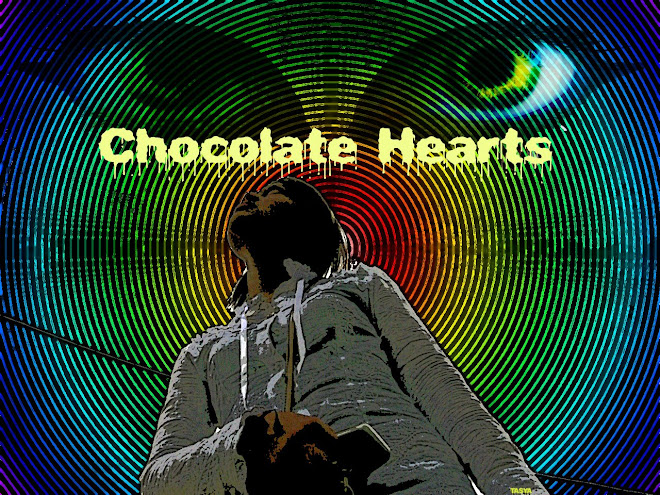


Chocolate is the new 'Black': Its making waves in all the health circles, as its health benefits appeal to medical and health practitioners with diverse educations and specialties. Laboratory studies reveal its potent anti-oxidant actions, and 'chocolate parties' reveal a great many other positive effects. We've all seen the surveys where many women would prefer chocolate over sex (this does not seem to be the case in European countries, however); add to this the results of an Italian study mentioning that women who eat chocolate have more sex, and the subject gets a little spicy. Spicy enough even to consider adding a healthy dose of chocolate to your life? Need more reasons? Its natural minerals makes your bones more dense, it prevents heart disease, its thought to attract abundance, and its full of mood-boosting and intelligence-boosting neurotransmitter precursors. Healthy, wealthy, wise and happy. So it is as easy and eating all the Hershey's bars you can get a hold of? Well, not quite...
Raw, unroasted chocolate IS A MUST to really reap the health benefits. Little of this fact is given weight in the mass-media's portrayal of chocolate's health benefits. There's a big difference in the chemical composition of un-roasted, naturally-dried chocolate when compared to 99% of the chocolate products available today. Nearly every single bar or drink, even at the large-chain heath food markets, is made from chocolate that's been roasted at high temperatures. 'Organic' does not mean raw; chocolate powder is not raw unless it says its raw. High-end organic hot cocoa drinks are still roasted, and likely processed with alkali to make them dissolve more easily. Why the roasting and processing? Because we've become accustom to chocolate looking and tasting like it has since our childhoods. Working with raw chocolate (called Cacao - note this is different than Cocoa!), like so many things that are really good for you, is best prepared at home using carefully selected ingredients. It's easy to do, and we'll include some recipes at the end. But first back to the question of why raw is better.
First the question of Caffeine. Many folks are sensitive to caffeine's effect on their nervous system. It raises blood pressure, shortens tempers and keeps people awake. And we all know chocolate has caffeine in it, right? But what form is it in? Research done by homeopaths indicates a significant difference on the stimulating effects of chocolate depending on whether it's been heated or not. A drink made with roasted beans evoked excitement of the nervous system that did not occur with unroasted chocolate. Alteration of chemical structures through heat is common, and occurs in the case of chocolate. The roasting process involves heating the beans between 250 and 350 degrees F for 30 minutes to 2 hours. Anecdotal reports of individuals moving from coffee or yerba mate as their morning drink to a cup of hot chocolate report gentle stimulating effects without anxiety, as their other drinks had produced. Even very sensitive people who do not do well with any form of caffeine report positive results with raw chocolate; nothing at all like the effects produced by coffee or caffeinated teas.
Next the question of anti-oxidants. Chocolate has been discovered to have exceptionally high quantities of important polyphenols. A study published in the Journal of Agriculture and Food Chemistry was titled: "Cocoa Has More Phenolic Phytochemicals and Higher Antioxidant Capacity than Teas and Red Wine." It's hard to argue with that. Here again the question of raw arises: One report notes that while roasted chocolate is made up of 5% antioxidants, when raw it contains twice as much at 10%. Another important note is the addition of milk to make milk chocolate. Research has shown that the addition of milk actually cancels-out the positive effects of the natural antioxidants. And milk may be one of the reasons many people seem to be allergic to chocolate, as lactose intolerance is fairly common. Another myth is some individuals break out when ingesting high amounts; reports indicate that raw chocolate does not cause this response, and that it may be the refined fats and sugars present in most chocolate products producing this effect.
Finally, the question of mood-enhancing neurochemicals and precursors. Chocolate contains significant quantities of the essential amino acid tryptophan. Tryptophan intake has recently been collated with neurogenesis, the development of new brain cells, and both long and short term memory. The presence of tryptophan is critical for the production of serotonin, a primary neurotransmitter associated with mood (Prozac works on the principal of enhancing the action of serotonin). Once in the body tryptophan reacts with vitamins B6 and B3 in the presence of magnesium (all present in raw chocolate) to produce serotonin. Enhanced serotonin function assists in diminishing anxiety and stress - ccording to Dr. Gabriel Cousens, serotonin is literally our "stress-defense shield." Tryptophan is heat sensitive and is often deficient in many cooked-food diets, even when animal protein intake is high. In addition to tryptophan (but not heat sensitive) chocolate also contains PEA, the 'love hormone' and Anandamide the 'bliss chemical'.
Convinced? Ready for a little raw rain-forest power? First its critical to find a good source; make sure the chocolate you're buying is raw - it's most often labeled as 'Cacao', the name for the raw chocolate beans and the tree on which they grow. Cacao nibs are small pieces of unprocessed beans that can be eaten straight, or mixed with other healthy snacks like Gogi berries. But the best-loved raw chocolate preparation is the original drink of hot chocolate. Now it won't be hot enough for long enough to convert any chemicals or to cook your preparation, just to make it a warm comforting drink - and of course, heating the water isn't necessary at all (though in recipes calling for Coconut oil, it helps to blend the oil into the drink). So to make a cup, use powdered raw cacao (grinding the nibs or beans in a coffee grinder can work, though you'll find this challenging as the natural oils in the chocolate will heat up and liquefy before the grinding is complete, leaving little crunchy bits). Put one or two tablespoons powdered chocolate, 1 to 2 teaspoons raw dark agave nectar (a low-glycemic index natural sweetner) and 1 to 2 teaspoons of Coconut oil in a blender. Add 8 to 12 ounces almost-boiling water and blend for 10 seconds. That's it! You'll find your personal favorite formula after a few preparations - more or less chocolate, oil, sweetener or water.
There are many, many recipes available online and in books about raw chocolate. Some favorite additions to the drink are Maca (Peruvian Ginseng), essential oils like Vanilla, Peppermint or Orange (just one drop is often enough) or a little powdered cinnamon. Your own raw bars are very easy to make, really just by omitting the water and adjusting the oil and sweetener ratios to make a thick chocolate paste. Add some chopped nuts if you like, press into a casserole dish and put it in the refrigerator long enough to make it firm. Experiment; it's chocolate! You're supposed to have fun. And with raw chocolate, it might be the most fun you can have eating while positively benefiting your health.

















0 comments:
Post a Comment